
Electric bicycle riders are often seen as responsible, eco-minded do-gooders making the selfless sacrifice of bike commuting to replace cars on the road and benefit us all, while motorcyclists are more commonly derided as organ-donating daredevils whose mere act of riding a motorcycle is considered an unnecessary risk.
But could things be backward? Could electric bikes actually be more dangerous than motorcycles?
That’s the argument made by FortNine, one of the most popular motorcycle education channels on YouTube.
And as an avid rider of both electric bicycles and electric motorcycles, the answer is quite important to me.
FortNine’s videos are always as highly researched as they are highly polished. And while presenter Ryan Kluftinger does take a few leaps in the new video (below), he presents several important points regarding the comparative safety of electric bikes and motorcycles.
The biggest issue though is that many of these supposed dangers that are inherent to electric bikes are more accurately described as riding styles and choices associated with e-bikes. These are things that e-bike riders can and should know to avoid.
So while I don’t agree with the premise that e-bikes are more dangerous than motorcycles, I think the points presented each have some validity that should be discussed. Doing so might just make us all safer riders and ultimately save lives.
Argument No. 1: E-bikes are slower and thus more dangerous
Granted, this seems incredibly counterintuitive. Which sounds more dangerous to you: a motorcycle at 50 mph or an electric bicycle at 15 mph?
Well, it depends.
Ryan’s point is that slow-moving e-bikes traveling on the side of a road with faster moving traffic is an inherent danger. And on this point, he and I actually agree.
A motorcycle moving steadily with traffic is less likely to get rear-ended than an e-bike being passed hundreds of times each trip.
While I’d rather crash at 15 mph on an e-bike than 50 mph on a motorcycle, the slower e-bike is likely to get repeatedly passed by cars, or as Ryan so eloquently puts it, “whizzed more often than a public urinal.”
I’ve been that slow e-bike on the side of the road getting whizzed my entire commute, and it’s not fun.
Of course that’s all the more reason for cities to invest in protected cycling lanes, but that’s playing the long game. In the short term, the type of e-bike we ride can make a big difference here.
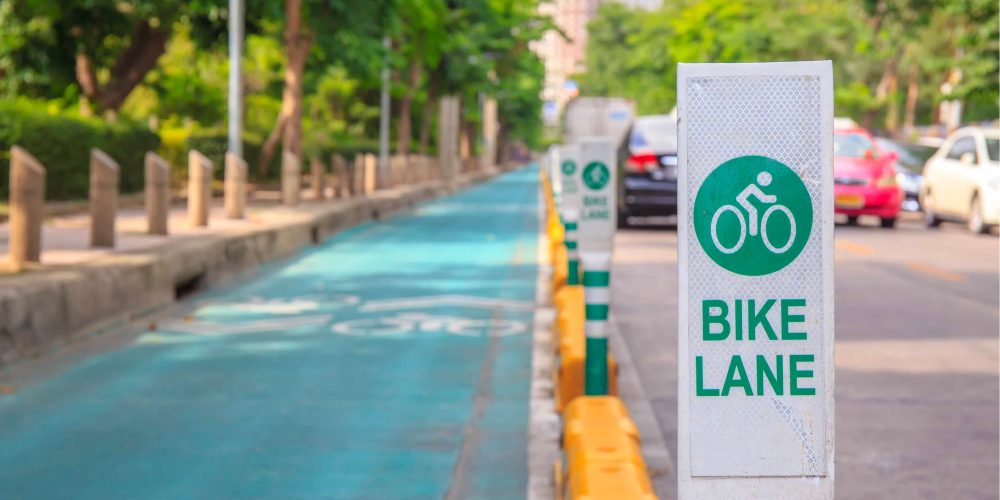
The slow speed limit associated with European e-bikes is the single largest reason I hate riding them in commuting scenarios – they feel dangerously slow when I need to keep up with traffic.
I’ve long promoted the safety of faster e-bikes for their ability to keep pace with traffic and allow riders to take the lane (more) safely.
When it comes to choosing a commuter e-bike, you’ll almost always find me on a Class 3 e-bike for that reason. I’d much rather be doing 28 mph in the city where car traffic rarely gets that much higher.
Argument No. 2: E-bike riders aren’t geared up appropriately
Again, this is actually a fair point. But it speaks almost entirely to rider culture than to the vehicles themselves.
When I ride faster and higher-power electric motorcycles, I’m covered head-to-toe in safety gear. I’ve got a that has passed a litany of crash and drop tests, with built-in armor, to keep my knuckles and palm skin in their current location, with kevlar lining, and . As they say, “dress for the slide, not for the ride.”
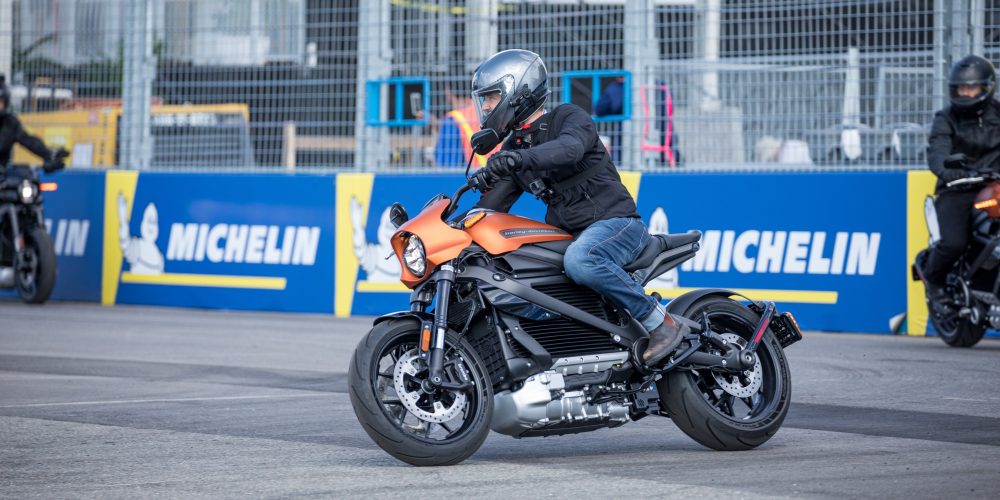
But when I ride my e-bikes, it’s usually a skateboarding helmet and a pair of Levi’s. That’s it.
I’ll occasionally throw on a full-face helmet and elbow/knee pads if I’m doing serious downhill mountain-biking where there’s a real risk of wrapping myself around a tree. But for typical e-bike commuting, I’m remarkably cavalier about safety equipment.
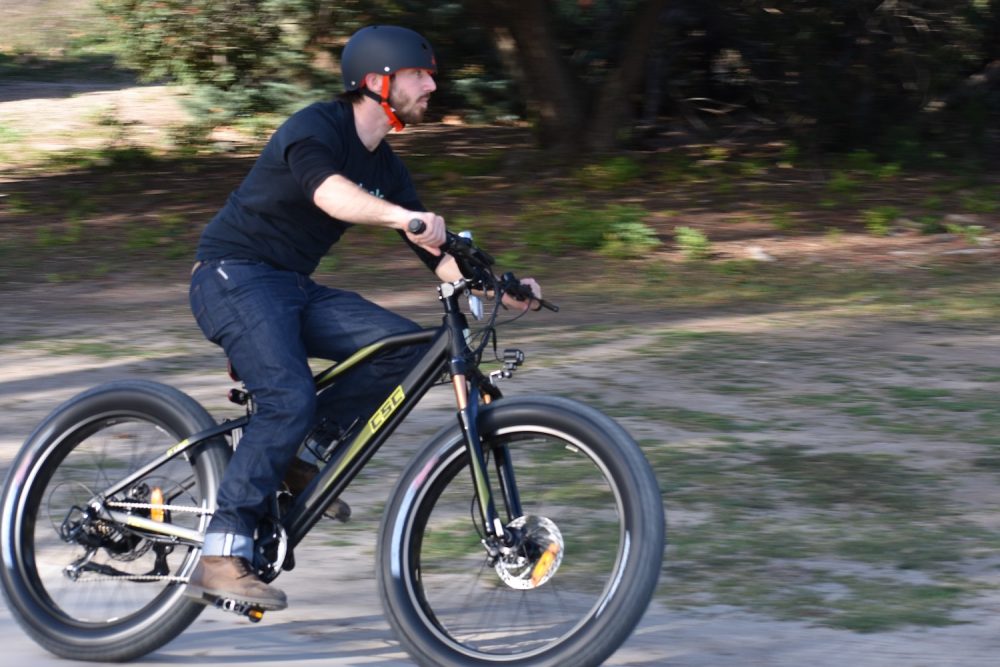
And I’m not the only one. Unlike the ATGATT ethos (“All the gear, all the time”) of the motorcycling community and the surprisingly militant emphasis on full-face helmet use in the electric skateboarding community, e-bike riders don’t seem to hold abundant use of safety gear in high esteem, at least not in a communal sort of way. It’s great to see individual riders taking safety seriously, but it hasn’t been ingrained in the e-biking culture the way it has in other alternative transport communities.
And that’s on us, because it should be. Asphalt doesn’t care what you’re riding when you go down. You’ll cheese grater off your skin just as easily on an e-bike as a motorcycle. That doesn’t make one any more inherently dangerous than the other in this regard – but the lack of proper safety gear being seen as a priority in the e-biking community does.
I’ve been riding e-bikes for well over a decade now, and over the last few years I’ve made small but conscious efforts to improve my safety gear. I used to casually hop on 30 mph e-bikes in sandals, something I try to avoid these days.
But I still don’t do enough, nor do many other e-bike riders, to dress appropriately for all foreseeable outcomes. It’s something I need to work on, and something that many of the rest of us should too. In this respect, e-bikes aren’t any more dangerous than motorcycles. But our laissez-faire attitudes about safety when casually hopping on fast electric bicycles can be the real danger.
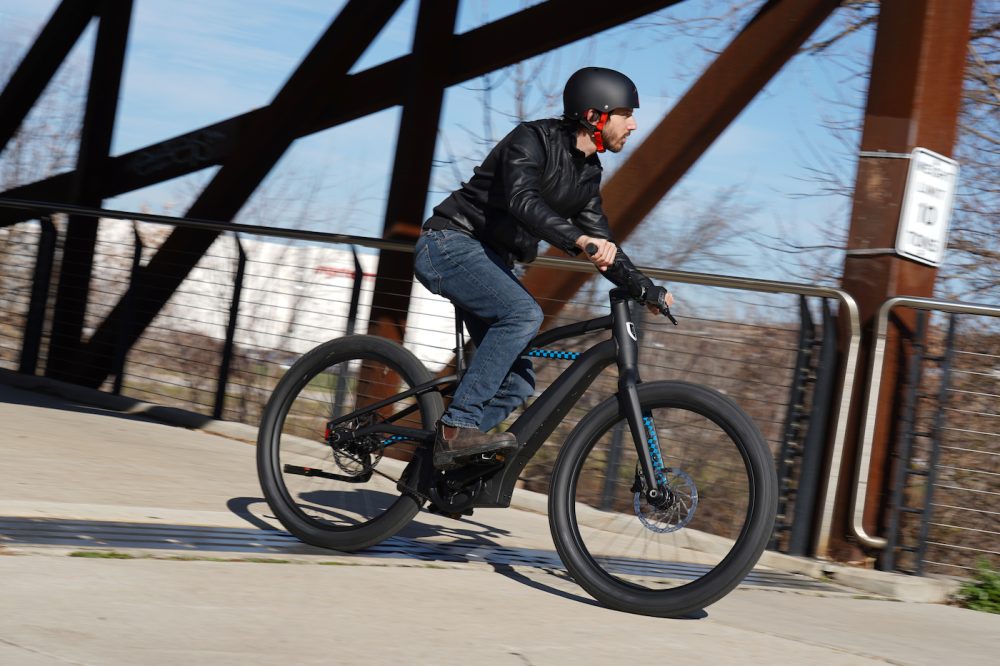
Argument No. 3: E-bikes have poor visibility
While I’ll yield some ground to the first two arguments, I’m not sure I subscribe to this one.
Ryan argues that E-bikes are less visible on the road than motorcycles.
I’d argue the two are equally invisible.
When I ride motorcycles, I pretty much assume cars have no idea that I’m there. And since I almost exclusively ride electric motorcycles, I’m often correct.
When I ride e-bikes, its the same thing. I never think, “He sees me, I’ll just go.”
It’s not that car drivers are malicious (usually), but rather they just aren’t looking for what they aren’t expecting. Roads are for cars, in their minds, and thus they’re looking for cars. And that makes two-wheelers pretty much equally invisible.
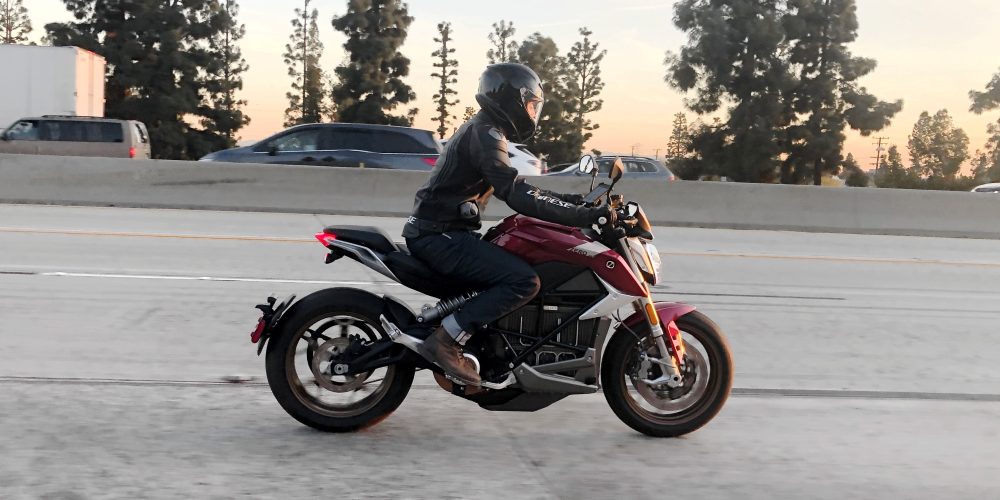
My motorcycles may outweigh my electric bicycles 10:1, but they take up basically the same footprint.
The only difference is at night, where automotive-level motorcycle headlights and tail lights put me on nearly equal footing with cars, while dinky built-in e-bike lights are left in the dust. For that reason I often try to throw on something reflective when riding at night.
But during the day, when most riding happens, all two-wheel riders should know to ride more than just defensively; they should ride as if they were invisible.
Argument No. 4: E-bike use less sophisticated parts
Ryan argues that e-bikes are more dangerous than motorcycles due to less sophisticated components.
Many motorcycles have rider aides like ABS brakes and traction control. All motorcycles in the US use DOT-regulated parts like tires, mirrors, lighting packages including turn signals, etc.
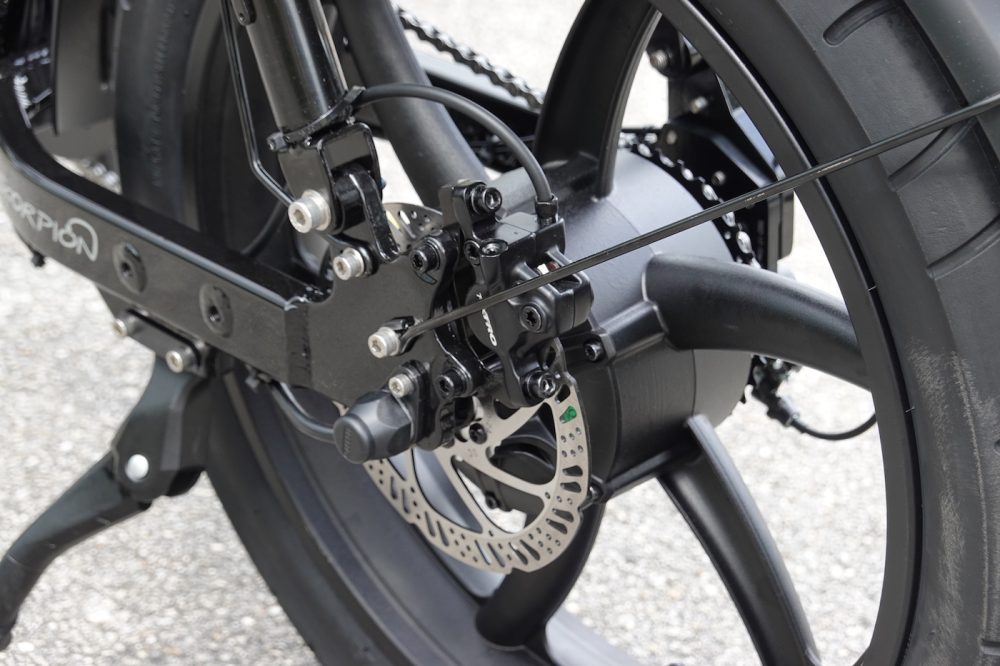
While I get Ryan’s point, I’m not sure I agree.
Rider aides are nice, but they also mean riders don’t always need to understand the fundamentals to the same degree.
I know exactly how the brakes on my e-bikes respond, and I know how I need to brake to avoid locking them up. I know my e-bikes don’t have traction control, and thus I don’t push them as hard in slippery riding conditions.
I could make the argument that motorcycles’ rider aides could lull riders into a false sense of security, which is dangerous in and of itself.
Could e-bikes benefit from some regulations regarding the quality (and inclusion) of components such as lights, mirrors, tires, etc? Perhaps. Though even without regulation, many e-bike specific tires designed for speeds higher than any of us will normally see are already finding their way onto e-bikes. Mirrors and motorcycle-style lights are becoming more common too.

The biggest safety factor for e-bikes and motorcycles
We can debate the above four arguments all day. I think Ryan makes some decent points, but also whiffs a few as well.
The biggest safety factor of all for two-wheeled vehicles, and the one that both e-bikes and motorcycles actually share, is rider skill.
Skills are something that are developed. They are learned and practiced. But they usually start with some fundamental instruction or level of education. And this is one area where I will admit that motorcycles have a leg up.
Motorcycles nearly universally require a specific motorcycle license, which usually entails practical instruction and testing.
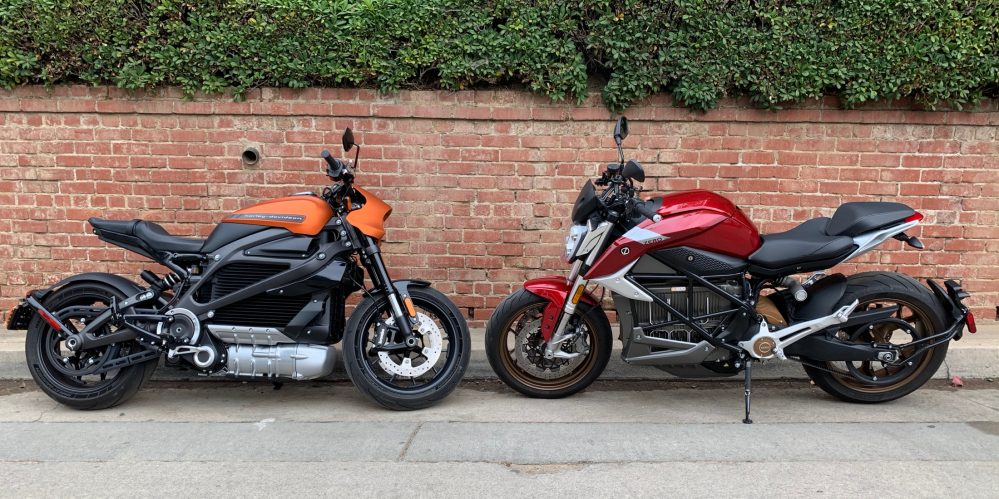
It’s not extensive – my own MSF course involved two evenings of classroom instruction followed by a weekend of parking lot maneuvers and testing. Two hundred bucks later, I had a head full of practical knowledge and a motorcycle license. Years of practice have helped hone those skills, though I wouldn’t say I’m any better than most riders.
The difference is that I never would have learned many of the things I know about two-wheelers if I hadn’t taken a motorcycle course to get my motorcycle license. And believe it or not, I use much of what I learned each time I hop on my electric bicycles.
This is why I’ve long advocated for electric bicycle riders, even those with no motorcycle interest, to take a motorcycle education course. The knowledge and skills you’ll gain are invaluable.
It is hard for me to recommend that something like this be mandatory for e-bike riders, as that would remove one of the biggest advantages of e-bikes: that they are almost entirely free of cumbersome regulation. But I still highly recommend that e-bike riders take such classes. A fun weekend of riding imparts important skills that you’ll have for life.

Mitigating risk
Motorcycle riders like to consider themselves experts of risk mitigation.
As a motorcycle rider myself, I’m not sure “expert” is the right term. But it is something we practice every time we throw our leg over a motorcycle. We all make choices based on the risks we are comfortable taking.
The reality though is that e-bike riders are in the exact same scenario, whether they realize it or not.
The biggest impact regarding the safety of two-wheeled vehicles are the decisions made by the rider. We can decide how fast to ride and where on the road we ride. We decide what gear to wear. We decide how to navigate around cars. We decide what type of vehicles to buy/ride with an understanding of the components we use. And we decide how much to educate ourselves.
Ultimately, motorcyclists and e-bike riders are more alike than we may realize. And because we share many of the same risks, we have to approach safety in much the same way.
It’s less about the vehicle. It’s more about us.
Subscribe to Electrek on YouTube for exclusive videos and subscribe to the podcast.
Author: Micah Toll
Source: Electrek



